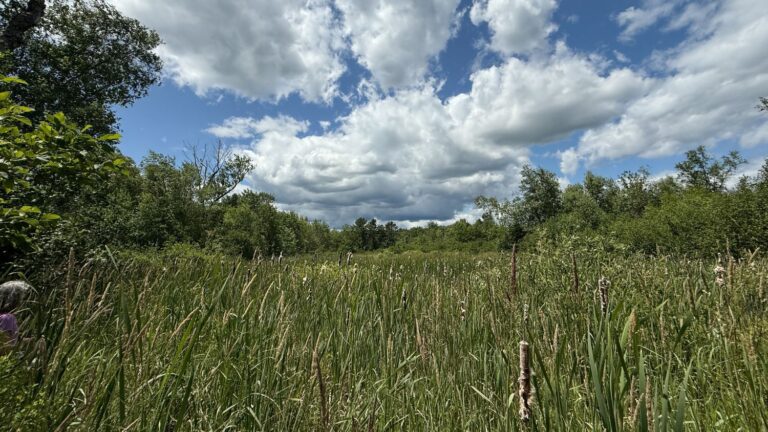Sinking in Saltwater, a Maine Monitor series on Maine’s saltwater marshes published in collaboration with the Portland Press Herald, received a third place award in the environmental reporting category of the 2025 National Headliner Awards. The project was reported by Maine Monitor Editor Kate Cough and photographed by Portland Press Herald photographer Gregory Rec.
A joint series by AL.com, MLive, Oregon Live and NJ.com took first place in the division for reporting on warming waters across the U.S. while the Las Vegas Review-Journal took second for a series that examined the present and future impacts of rising summer temperatures in Las Vegas.
Maine has some of the most extensive blue carbon reservoirs in the northeast — second only to Massachusetts, according to a study published by the Environmental Protection Agency in 2023. But as sea levels rise and development presses in, these reservoirs, and the habitats they create, are at risk of disappearing.
An analysis by the University of Maine suggests that a significant portion of Maine’s salt marshes — between 28 and 57 percent, depending on the sea level rise scenario — could be gone by the end of the century. They are also threatened by polluted runoff from pesticides, septic systems and agricultural waste.
Over the past 25 years, nearly 300 acres of Maine’s wetlands — both fresh and saltwater — have been impacted by or lost to development, according to a Maine Monitor/Press Herald analysis of data from the state’s In Lieu Fee Compensation Program. The program allows developers to fill or convert certain wetlands if they pay a fee, money that is used for conservation projects elsewhere.
The series, which was supported by the Pulitzer Center as part of its nationwide Connected Coastlines reporting initiative, looked at the plan in Addison to remove tide gates in an effort to return the area to a natural state, a years-long marsh restoration project in Hancock, how conservation groups are racing to save Maine’s largest salt marsh in Scarborough from rising seas, development and polluted runoff and how sea level rise is expected to fully submerge the estuarine lands at the Wells Reserve by the end of the century.
Seabird photography recognized
Derrick Z. Jackson, meanwhile, earned second place in the individual photo portfolio category for photographs of endangered seabirds on Maine’s coast that he captured for separate pieces published by The Maine Monitor and the Union of Concerned Scientists.
In August 2024, Jackson reported for The Monitor that Seal Island, which sits 21 miles off the coast of Rockland, saw a record number of breeding puffins.
Despite the long-term warming of the Gulf of Maine and long-term increase in the severity of weather events, conditions were so uneventful in the summer of 2024 that Seal Island set a record for breeding puffins, Jackson reported.
A crew from the Audubon Seabird Institute counted 672 active puffin burrows, about 100 more than the last census five years ago. The total number of known burrows surpassed 1,000 for the first time. Other birds also did well. Razorbills, a larger cousin of the puffin, established a record 101 active burrows.
First place in this category went to Smiley N. Pool of the Dallas Morning News while third place went to Thomas A. Ferrara of Newsday.







